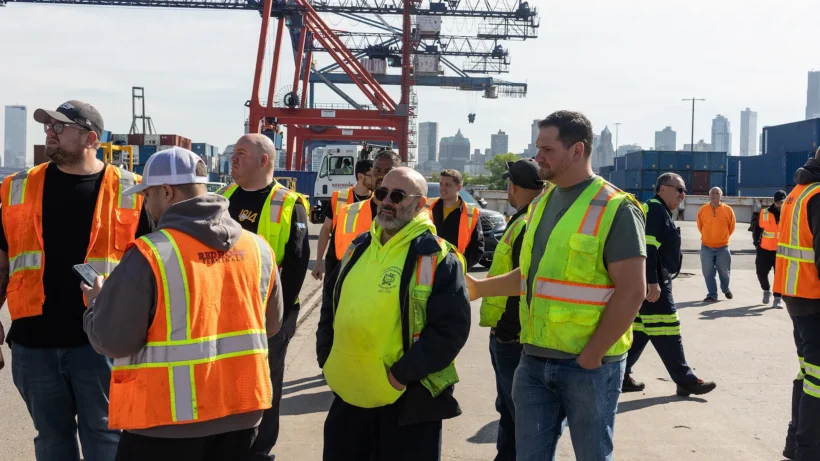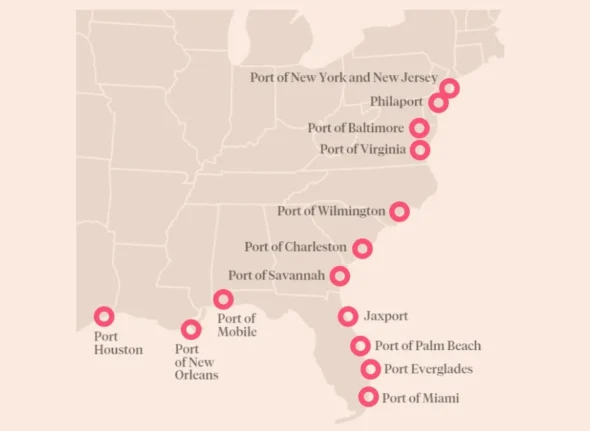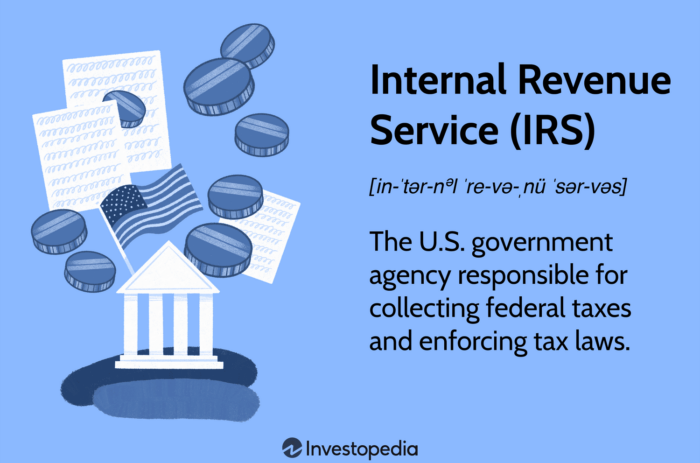
redo Jump to...
print Print...
(by Eric Revell, Fox Business) – The union representing dockworkers at East and Gulf Coast ports walked away from the negotiating table with port employers this week over concerns about automation as the two sides face a mid-January deadline to finalize a deal and prevent the resumption of a strike, FOX Business has learned.
The International Longshoremen’s Association (ILA) and the U.S. Maritime Alliance (USMX), which represents port employers, were on their second day of talks this week when the ILA union left negotiations, a source tells FOX Business.
The source said that the ILA union is refusing to agree to the addition of any new technology at East and Gulf Coast ports, even though USMX has said that no jobs would be eliminated as a result of automation. Port employers don’t expect the union to return to the negotiating table.
The ILA confirmed in a statement that it broke off negotiations with USMX and placed the blame on port employers for “pushing automation and semi-automation language in its Master Contract proposals that will eliminate ILA jobs.” It added that it “remains hopeful that USMX will alter its unwinnable strategy, and resume negotiations as soon as possible.”
“The ILA’s resolve remains strong not to surrender any ILA jobs,” the union said. “We are disappointed that USMX would attempt to disregard our ILA’s well-known position opposing job-cutting automation and semi-automation. Once again, our employers who are raking in billion-dollar profits annually have exposed their ultimate goal of wanting to eliminate as many ILA jobs as possible, and replace our ILA longshore workers with robotic equipment.”
USMX countered that while there was “positive progress on a number of issues, we were unable to make significant progress on our discussions that focused on a range of technology issues.” The group representing port employers said that the ILA “is insisting on an agreement that would move our industry backward by restricting future use of technology that has existed in some of our ports for nearly two decades — making it impossible to evolve to meet the nation’s future supply chain demands.”
“The USMX has been clear that we are not seeking technology that would eliminate jobs. What we need is continued modernization that is essential to improve worker safety, increase efficiency in a way that protects and grows jobs, keeps supply chains strong, and increases capacity that will financially benefit American businesses and workers alike,” it added.
ILA dockworkers went on strike on Oct. 1 after negotiations between the two sides in September failed to reach an agreement following the expiration of the union’s six-year contract. After a three-day strike, the union and USMX reached a tentative agreement on wages and the ILA agreed to suspend its strike until Jan. 15 while they negotiate other outstanding issues, such as automation.
Under the tentative deal, the ILA’s 45,000 dockworkers would see a 62% pay raise over the life of the next six-year contract. The union and port employers will have to reach an agreement on port automation and other outstanding issues and ratify the tentative deal by Jan. 15 for it to take effect.
Based on the previous contract, ILA dockworkers’ starting wage was $20 per hour and topped out at $39 per hour (or more than $81,000 annually) for employees with six or more years of service — although overtime and royalty pay earned by workers push their typical take-home pay much higher.
According to internal USMX documents viewed by FOX Business, the average full-time ILA dockworker in New York/New Jersey under the previous contract made $350,000 per year, while in Norfolk, Virginia, they made an average of $200,000. ILA members in Savannah, Georgia, averaged $180,000, while their peers in Houston and Charleston, South Carolina, made an average of $170,000.
ILA President Harold Daggett signaled in a September interview that the union was willing to persist in its strike to achieve its demands, even if it meant inflicting broader damage on the U.S. economy.
“I’ll cripple you,” Daggett said in the interview about the effects of a strike. “I will cripple you and you have no idea what that means. Nobody does.”
Published at Fox Business on Nov. 12, 2024. Reprinted here for educational purposes only. May not be reproduced on other websites without permission. This is a developing story. Please follow the news for updates.
Questions
1. Why did union reps from the International Longshoremen’s Association (ILA) walk away from contract negotiations with the port employers association (USMX) this week?
2. The employers contract with the dockworkers union was up in September. Why did the longshoremen suspend their strike in October when negotiations first broke down? (What did the sides agree to at that time?)
3. a) How much of a pay increase will the 45,000 dockworkers from Maine to Texas receive in this new contract?
b) What needs to happen for this increase to take effect?
4. What assurance made by the port owners (USMX) does the union not believe?
5. What issue is absolutely non-negotiable for the union?
6. The union says the USMX owners are “raking in billion-dollar profits annually.” Union boss Harold Daggett said in October he is just trying to get his members what they deserve. What is the average salary of the longshoremen under the contract that just expired in September?
7. In response to ILA accusations that the port owners want to eliminate union jobs, the USMX said, “The USMX has been clear that we are not seeking technology that would eliminate jobs. What we need is continued modernization that is essential to improve worker safety, increase efficiency in a way that protects and grows jobs, keeps supply chains strong, and increases capacity that will financially benefit American businesses and workers alike,” it added.
What do you think:
a) If the owners include assurances in the contract that no jobs will be eliminated/replaced by technology/modernization, should the union believe them? Explain your answer.
b) It has been suggested that if the union successfully blocks the East Coast docks from adding technology, shippers will just use other ports or take alternate routes. Can the union “fight progress”? Should they? Explain your answer.
Background
Who is Harold Daggett, the union boss behind the port strikes? (also see video below)
- Longshoreman union boss Harold Daggett has long cast himself as a staunch advocate for blue-collar workers, even as he has lived in luxury, owning a yacht and driving a Bentley.
- Daggett has worked at the ILA (the Longshoreman’s union) for 57 years and became president in 2011 — raked in $728,000 in compensation last year from the ILA.
- He collected another $173,000 as president emeritus of a local union branch, according to labor department filings.
- He lives in a 7,136 square-foot house valued at $1.7 million on a 10-acre lot in New Jersey.
- Daggett’s sons — Dennis and John — reportedly earn similarly cushy salaries in their roles at the union.
- Dennis, the executive vice president of the ILA, earned $250,156 in the fiscal year ended December 2022, according to ProPublica. John, the general vice president of the Atlantic Coast District ILA, reportedly earned $264,228 in the same period. (Excerpted from an October 1, 2024 NY Post report)
Resources
Longshoreman Union President Harold Daggett, early September 2024 on the potential for a strike:
Watch an October 1, 2024 report from Stuart Varney, Fox Business:
The U.S. Maritime Alliance, Ltd. (USMX) represents employers of the East and Gulf Coast longshore industry. Its membership consists of container carriers, marine terminal operators, and port associations. USMX’s member companies are responsible for the transportation and handling of cargo shipped to and from the United States. (USMX)
The International Longshoremen’s Association union (ILA) represents dockworkers from Maine to Texas. See ILA.com for map)
- Read a Sept. 20 article: Longshoremen at key US ports threatening to strike.
- Read an Oct. 2 article on how a strike would affect hurricane victims trying to rebuild: Hurricane Helene’s death toll tops 130 as Southeast digs out from storm’s devastation.
Daily “Answers” emails are provided for Daily News Articles, Tuesday’s World Events and Friday’s News Quiz.




